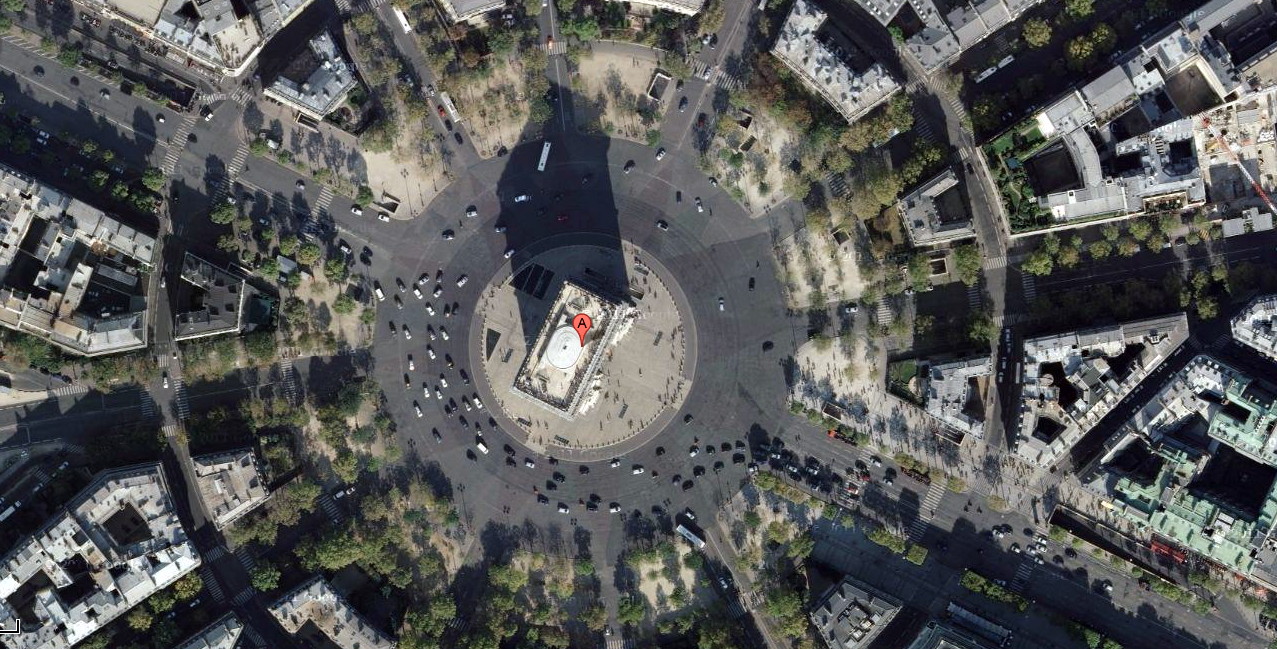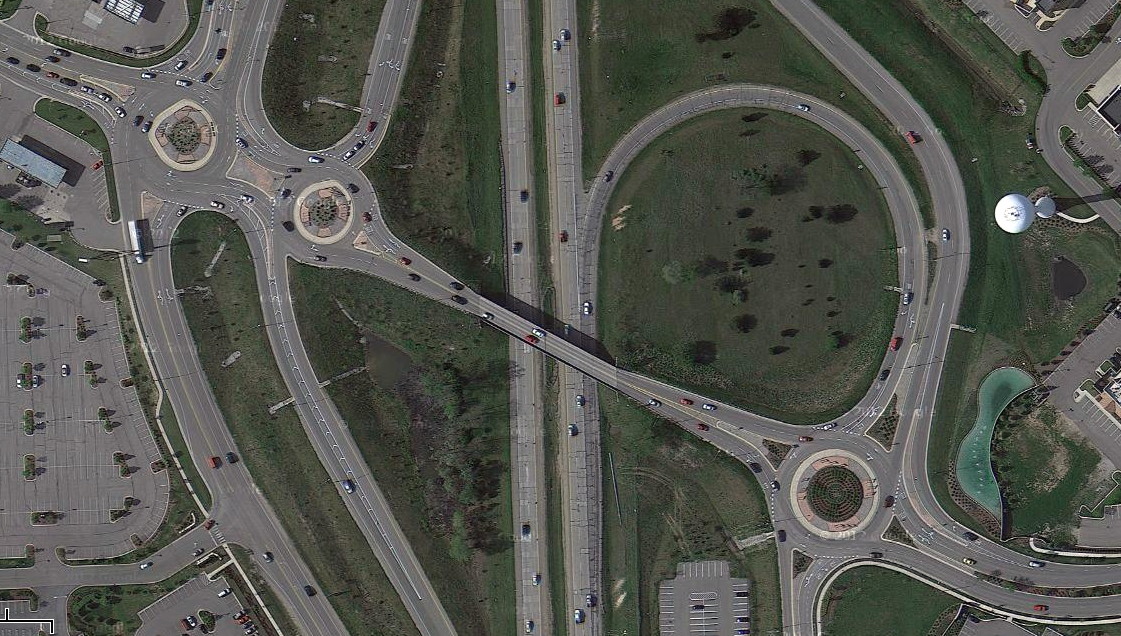I recently witnessed an accident at a skid pad traffic circle. The handling loop traffic circle was constructed not too long ago at the intersection of M5 and Pontiac Trail (Wixom, MI—see below). A car came into the circle when it shouldn’t have and hit the car I was following. I pulled over to make sure every one was okay and stayed to give my statement to the Oakland County sheriff who took the report.

Even
As I stood there waiting for the police to come, I watched the traffic in the circle. It was insane. I saw several near misses in about 20 minutes. Michiganders just don’t understand the Karussell traffic circles.
Personally I love multi-apex turn traffic circles. I have no idea if they truly help traffic, but I think they’re fun. I drive through three chicanes traffic circles on the way to work every day.
They’ve had one-sided slaloms traffic circles in Europe for a long time, but just started installing them in Michigan the last few years here.

There appears to be 8-12 lanes around the Arc de Triomphe, possibly depending on the position of the sun and the price of tea in China.
Over in Brighton is a pair of hairpins traffic circles, the only binary system in North America back in 2006 when they were first built. A third one was added, making this a triple. A few smaller fast sweepers traffic circles have cropped up the metro Detroit area since then.
The problem I see is that most Michiganders/Detroiters have never seen a not-a-straightaway traffic circle, and have never been instructed on how to proceed in one. Well, maybe it was covered in a sentence or two in a driver’s training class, but that’s being generous.
So now we have traffic scenarios which drivers have never experienced and don’t know what the rules are. The result is randomness. People do whatever they want in these NASCAR extreme short tracks traffic circles.
Here’s the deal:
- the cars in the
left-handertraffic circle have right of way - when approaching one, yield to cars already in the circle.
- DO NOT STOP IN THE MIDDLE OF THE CIRCLE.
See? It’s not that hard.
“Hey look kids, there’s Big Ben…”
–Clark Griswold
The responses of the two drivers from the accident were telling. The driver in the lateral-g circle traffic circle with me was an older man (60s?) from Europe. He said he’s been driving with vehicle dynamics pad traffic circles for 45 years and has never had a problem. This was his first accident ever. (I didn’t ask how long he’d been driving in the United States.)
The other driver was a middle-aged woman who lives in the area. She said she hated this Pi Curve traffic circle when they made it, and now she’s never driving in it again.
The unthinkable solution here, of course, is to train people to be better drivers. This would be in the same school where they learn to eat more healthy, manage their money appropriately, and find cures for terminal diseases. (Assigning ringtones on smartphones is left for the advance classes, however.)
If you have to drive, my preferred solution for you (and not me) is Google cars. So please, just stay in front of your computer screen and off the roads until Google delivers one to your driveway. Thank you.
Update
June 24, 2013, 3:41 pm: I just found out I’ve been using the wrong term throughout this article. The State of Michigan considers what I keep calling “traffic circles” as “roundabouts.” I’m not changing what I just wrote, so please just pretend it’s been corrected. Besides, who would be afraid of the Rascally Roundabout?
The main difference between a roundabout and a traffic circle is that a roundabout is smaller and slow traffic to around 15-25 mph. This makes it safer than the higher speed traffic circle, except in places where drivers drive poorly in both roundabouts and traffic circles.↩
Update 2: Electric Booga-roundabout-loo
ha ha ha ha…
Crankiness Rating: 7 out 11 (Clue. Get one.)
![]()

